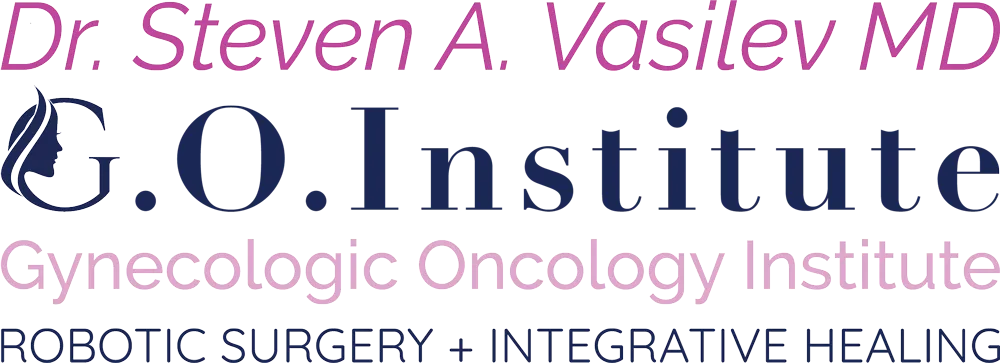HIPAA-Compliant "Safe" & Convenient Telemedicine Consultations
Endometriosis-Related Sciatica: Innovative Approaches for Pain Relief and Management
Explore Specialized Solutions for Sciatica Caused by Endometriosis
Endometriosis Sciatica Leg Pain
Sciatic nerve endometriosis is real, but the bulk of endometriosis is found on or near the pelvic structures and organs consisting of the bladder, rectovaginal septum, segments of large and small bowel, and of course the uterus, ovaries and Fallopian tubes. However, it has certainly been discovered in very uncommon, remote locations.
The exact prevalence of extrapelvic endometriosis occurence by location is unknown because of the paucity of published studies on this.
Some unusual areas of endo implants include the rectus abdominis muscular tissue (“abdominal muscles” or “abs”), the brain, inside the liver, in the eyes, in surgical scars, on the surface of the diaphragm (above the liver), pleura (the lining of the chest cavity) as well as pericardium (around the heart), stomach wall surface, and even inside the nose. Extrapelvic appearance of endo can show up as unusual symptoms, like so-called catamenial pneumothorax (air leak around the lungs).

So as far as unusual symptoms are concerned, leg and buttock pain may mean sciatic endometriosis. The means the endo is either on or near the sciatic nerve, causing inflammation and scarring which causes the nerve to fire pain signals. The sciatic nerve is technically in the pelvis, but it is not inside the area where the uterus is located. Rather the sciatic nerve is in what is called the “retroperitoneum” or the very deep area where your bones and muscles are located. This is very important to know because the type of surgeon(s) involved has to be very special, and we cover that a little later in this section.
Testing and Diagnosis
Laboratory tests rarely help make this diagnosis. A CA-125 level, which is usually an ovarian cancer tumor marker, can be elevated in endometriosis due to inflammation. But this is not specific for endometriosis and certainly not for sciatic nerve involvement. Imaging scans (CT scan, MRI or ultrasound) can be more helpful by showing whether or not something is growing around the nerve or pressing on it. However, unless the presence of endometriosis has already been confirmed from prior surgery, this will not help make a diagnosis of endo or endometriosis-related sciatica. Because of the uncertainty of endo diagnosis, extrapelvic symptoms should never be disregarded as unrelated when a diagnosis of endo seems possible.

Sciatic endometriosis is certainly unusual, but it must always be considered in the “differential diagnosis” (looking for root causes of symptoms) of pain and signs that are in the range or area of where sciatic nerve sensation fibers are known to cover. The first confirmed case of endometriosis sciatica was reported in 1946 by Schlicke, not 1955 like others inaccurately report. But we digress and are splitting hairs. The point is that we have known about it for over 50 years. Since then, other cases have been reported in the medical journals, but it is very rare. There may or may not be a reason to believe that the left side is more often affected, but both sides are possible.

Symptoms and Findings
Pain may be cyclic, just like rectal pain due to endo. It may begin prior to menstruation and can last a number of days after the end of menses. It may be accompanied by motor deficits (weakness or stride/walking problems), foot drop, discomfort or tingling radiating on the backside of the leg from the buttock down. This can be exacerbated due to walking, specifically long distances. There can also tenderness of the deep buttock, which is in the area of the sciatic notch where the sciatic nerve passes. Left neglected, sciatic endometriosis might cause nerve damage in the long run. Any prolonged pressure or inflammation around a major nerve can do this.
When a doctor performs a physical examination, they may find “deficits” (abnormalities) in the sciatic nerve distribution. There might be localized deep tenderness over the sciatic notch as well but this is hard to reproduce. A pelvic exam may be normal, depending on the extent of endo in the pelvis. Imaging can help in diagnosis, with MRI probably being the most accurate test in this area. The earlier the diagnosis, the less likely that there will be long-term nerve damage. Sciatic nerve issues can be present for many other reasons, but if you have endo or if it is strongly suspected, it is quite possible that the leg and buttock pain you are experiencing can be directly related to endometriosis.
Treatment of Endometriosis Sciatica
Sciatic endometriosis treatment is most likely going to start with surgery. Endometriosis excision is the gold standard and if sciatic involvement is suspected, the choice of surgeons becomes critical.
This nerve is deep and the average gynecologist has never even seen it during surgery. Even endo-excision surgeons do not normally operate in this area. Gynecologic oncologists, who often operate on lymph nodes for cancer in the area, are more likely to be familiar with the anatomy. But the more the nerve is likely to be directly infiltrated (i.e. endo growing into the nerve), the more a neurosurgeon should also be part of the team.

When surgery is not possible in the short run for whatever reason, a medical treatment regimen that would be anti-inflammatory and possibly even anti-estrogenic for a short time may be helpful. An anti-inflammatory diet would not hurt as well. But surgery is the goal. Physical therapy of the pelvic floor and medical support therapy including vaginal Valium may also be of benefit. This treatment is best used on an individualized basis and within a comprehensive medical-surgical treatment plan.

Dr. Steve Vasilev MD — Reoperative Endo Excision Specialist
At our Centers, we create the team you need for individualized care, including endo excision specialists, neurosurgeons as needed, physical therapists, integrative practitioners. Dr. Steve Vasilev MD is the Director and is the “go-to” robotic minimally invasive surgeon for difficult re-operative endometriosis in the Southern California area and the only such surgeon on the California Central Coast.

© Steven Vasilev MD | Gynecologic Oncology. All Rights Reserved 2015-2024.
